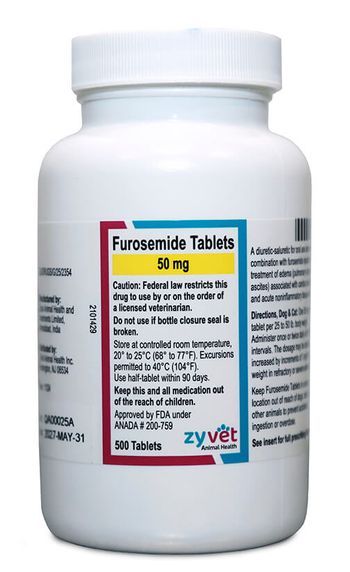
Lecture Link: The NT-proBNP assay: A portent of heart health
Find out the latest on this cardiac biomarker.
The utility of cardiac biomarkers for diagnosing and managing heart disease in veterinary medicine is an avid area of research. In his presentation "Cardiology reviews: Diagnosis, prognosis, and risk stratification of heart disease using NT-proBNP assay," Mark Oyama, DVM, DACVIM (cardiology), discussed how this test may be best used by veterinarians in general practice.1
HOW THE ASSAY WORKS
Part of the key to identifying this test's utility is to understand exactly what the assay is testing for. B-type natriuretic peptide (BNP) is secreted as a pro-hormone from the atrial and ventricular myocardium in response to an expansion in plasma volume, vasoconstriction, and activation of the renin-angiotensin-aldosterone system. The hormone is cleaved into an active molecule and an inactive N-terminal fragment. The concentration of the N-terminal fragment is what is measured by the assay.
Patients with congestive heart failure—or any condition resulting in cardiac overload—will have higher-than-expected proBNP concentrations, which are generally proportional to disease severity.
WHEN TO USE THE NT-proBNP ASSAY
For conditions such as mitral valve disease, this test may be of limited value because a diagnosis can be readily made by thorough auscultation and documentation of a heart murmur. In these cases, the assay also has limited utility in determining disease severity; thoracic radiography is preferred.
In cats with occult cardiomyopathy, however, the assay may prove more useful. Many cats with heart murmurs ultimately are found to have benign murmurs based on the results of an echocardiographic examination. Upon documenting a murmur in a cat that may have occult cardiomyopathy, an increased NT-proBNP concentration will support a suspicion of cardiac disease and help justify the need for further evaluation with an echocardiogram.
In dogs with possible dilated cardiomyopathy, Holter monitoring and echocardiography will still be required for diagnosis, but the NT-proBNP assay results may signify an increased likelihood that these more extensive tests are needed. Dr. Oyama noted, however, that studies have shown normal dogs and dogs with dilated cardiomyopathy can have results in the same range, so the assay results may not be as precise in these cases.
Dr. Oyama reiterated that NT-proBNP testing does not provide a definitive diagnosis but rather "simply increases the likelihood that significant disease will be found if further and more definitive diagnostics are pursued."
The assay may also prove useful in dyspneic patients in which it is difficult to discern respiratory from cardiac disease. A patient with a normal NT-proBNP concentration is highly unlikely to have cardiac dysfunction. Note, however, that increased concentrations may also be seen in patients with concurrent conditions, such as renal disease, hyperthyroidism, and pulmonary hypertension.
THE ASSAY'S UTILITY DOWN THE ROAD
In the future, using the assay to predict the risk of developing congestive heart failure in predisposed breeds may be useful; however, since there is no consensus on what interventions would decrease the risk in this population, the utility of biomarkers for this application is still uncertain.
In an as-yet-unpublished meta-analysis, Dr. Oyama reported the NT-proBNP assay may also be used as a means of guiding therapy, but further research is required. At this time, NT-proBNP assays are only run at commercial laboratories.
REFERENCE
1. Oyama M. Cardiology reviews: diagnosis, prognosis, and risk stratification of heart disease using NT-proBNP assay. Presented at the Annual Meeting of the American College of Veterinary Internal Medicine; June 2012.
This "Lecture Link" summary from the 2012 American College of Veterinary Internal Medicine Forum was contributed by Jennifer L. Garcia, DVM, DACVIM, a veterinary internal medicine specialist at Sugarland Veterinary Specialists in Houston, Texas.
Dr. Jennifer L. Garcia
Newsletter
From exam room tips to practice management insights, get trusted veterinary news delivered straight to your inbox—subscribe to dvm360.






